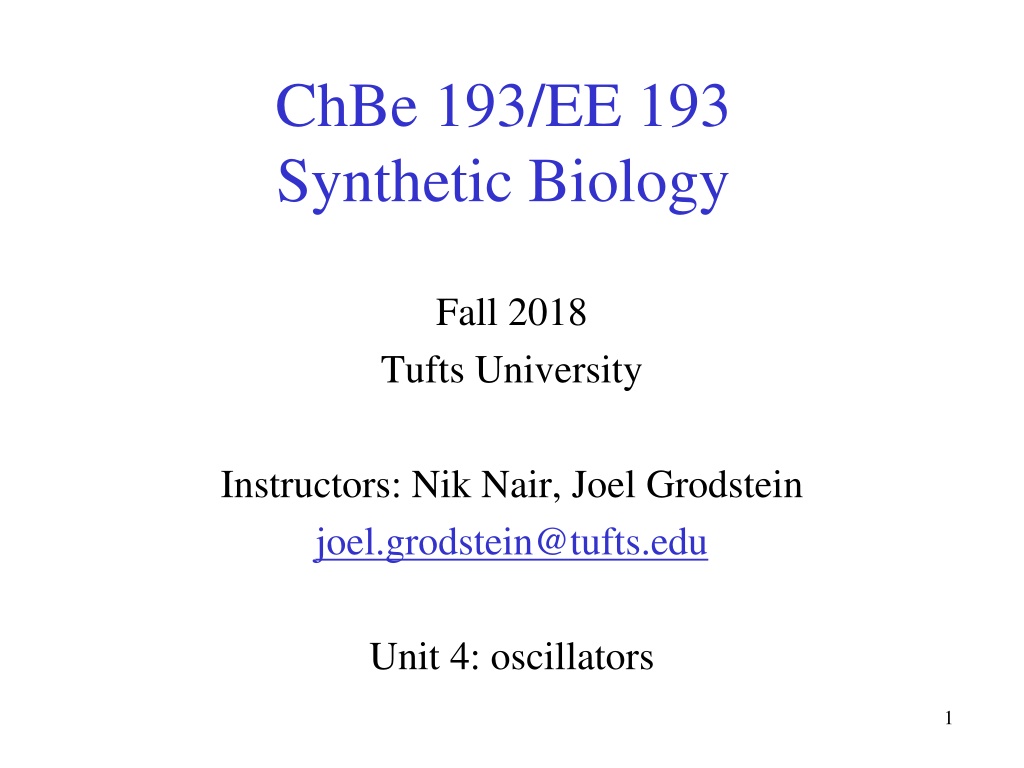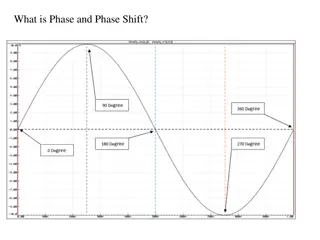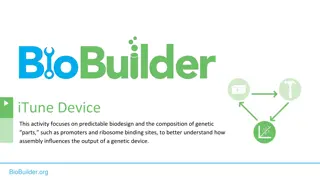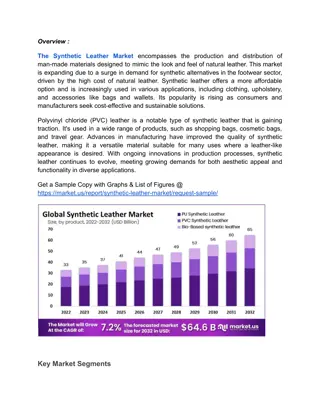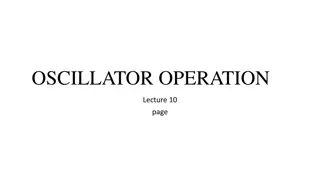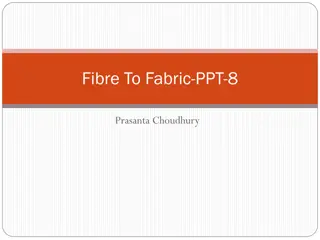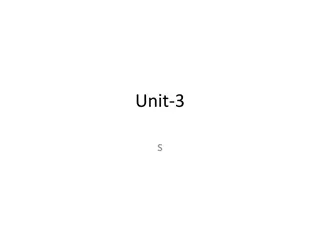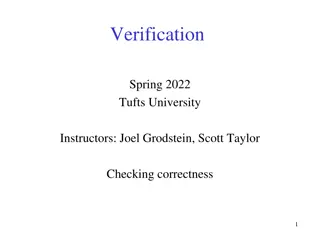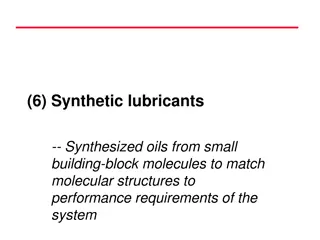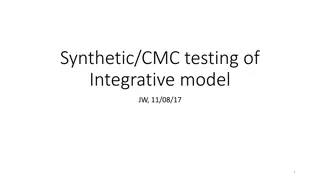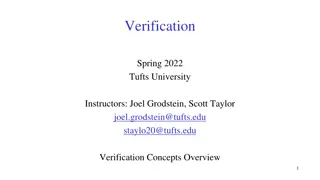Understanding Oscillators in Synthetic Biology at Tufts University
Explore the concept of oscillators and their significance in synthetic biology through a series of lectures by instructors Nik Nair and Joel Grodstein at Tufts University. Discover the applications of oscillators in biology, such as controlling heartbeats and circadian rhythms, and learn how to build and optimize these essential components for various systems.
Download Presentation

Please find below an Image/Link to download the presentation.
The content on the website is provided AS IS for your information and personal use only. It may not be sold, licensed, or shared on other websites without obtaining consent from the author. Download presentation by click this link. If you encounter any issues during the download, it is possible that the publisher has removed the file from their server.
E N D
Presentation Transcript
ChBe 193/EE 193 Synthetic Biology Fall 2018 Tufts University Instructors: Nik Nair, Joel Grodstein joel.grodstein@tufts.edu Unit 4: oscillators 1
What we will learn What is an oscillator, and why do we care? Where are oscillators useful? How to build a good oscillator 2 ChBE 193/EE 193 SynBio Joel Grodstein
What is an oscillator? Well something that oscillates on off on off on off Example:https://www.youtube.com/watch?v=Ce- bqtaGlvw 3 ChBE 193/EE 193 SynBio Joel Grodstein
Examples of oscillators Can you think of some oscillators in biology? Control your heartbeat (do you think this is a GRN?) Circadian rhythms (circa de = about a day) We ll see other applications shortly; most digital systems use a clock, to keep the pieces aligned Circadian cycle in humans is quite complex Originally thought to be 24 hours, then 25, and now 24 Must be entrainable (your body readjusts after jet lag). We will learn to build entrainable oscillators. Even cells that don t see sunlight must sync to the cycle 2017 Nobel prize in medicine Jeffrey Hall, Michael Rosbash and Michael Young Drosophila circadian rhythm https://qz.com/1095294/2017-nobel-laureate-jeffrey-hall-left- science-because-he-ran-out-of-funding/ 4 ChBE 193/EE 193 SynBio Joel Grodstein
The simplest oscillator 0 1 0 1 P How it works Assume P starts at 0 Inverter with input=0 output=1 Inverter with input=1 output=0 Inverter with input=0 output=1 5 ChBE 193/EE 193 SynBio Joel Grodstein
Simulation Let s simulate our simplest oscillator ; one_inv() Questions: Did it oscillate? Any ideas why not? How different is this circuit from our negative-feedback circuits for setting a fixed [P]? P 6 ChBE 193/EE 193 SynBio Joel Grodstein
Oscillators and showers My upstairs shower oscillates Moral of the story: delayed feedback is good (if you re building an oscillator) 7 ChBE 193/EE 193 SynBio Joel Grodstein
Simulation and DFQ Our simulator is actually doing a numerical solution to a DFQ, given an initial value ? ? ??= ????? 1 ? ???? ? 1+ ?? If we had more than one metabolite, we would have a system of DFQ (with variables [P1], [P2], 8 ChBE 193/EE 193 SynBio Joel Grodstein
Intuitive math [P] time We would like our oscillator to oscillate (as above) Note that, unlike math, our [P] can never be negative Can the DFQ ? ? 1 ? ???? do that? ??= ????? ? 1+ ?? Really, it s just ? ? Look at the two red points. Both have the same [P] but different slopes. But no function f([P]) can do that! A system of equations with just one state variable cannot oscillate. ??= ? ? . 9 ChBE 193/EE 193 SynBio Joel Grodstein
Intuitive math [P1] time Consider a system with two variables ? ?1 ?? ? ?2 ?? = ?1 ?1,?2 = ?2 ?1,?2 Now ? ?1 is different. ?? can be different at the two red dots because [P2] 10 ChBE 193/EE 193 SynBio Joel Grodstein
Loop gain P1 P2 [P1] [P2] time Random noise generates a little sine wave at P1 It gets inverted (with a bit of delay) at P2 We get more delay through the buffer If the red signal is in sync with the blue, and amplified relative to blue, then random noise will create bigger and bigger oscillations; if not, it will die out ChBE 193/EE 193 SynBio Joel Grodstein 11
What frequency will oscillate? P1 P2 [P1] [P2] time Start with the original blue signal Invert it to get the green signal Delay it by one phase Now it s in sync again Conclusion: delay around the loop will be one phase of the oscillator period i.e., TC = 2 * loop_delay Random noise occurs at lots of frequencies but only one will oscillate If the system has loop gain > 1at that frequency ChBE 193/EE 193 SynBio Joel Grodstein 12
Example P1 P1 P2 P2 P3 P3 P4 Run inv_bufs() Extra buffer gives more delay & more gain ChBE 193/EE 193 SynBio Joel Grodstein 13
Input period = 6s Circuit: a sine wave generator driving a chain of buffer + 5 invs Same circuit, two different sine-wave inputs. Circuit gain depends on input frequency! Shower criterion (need delay) is about the same as the loop-gain criterion Input period = 10s 14 ChBE 193/EE 193 SynBio Joel Grodstein
Without enough gain Parameters: 6-long chain Each gate has N=2 Each gate has gain < 1; cascading them is not enough! P1 P2 P3 P4 15 ChBE 193/EE 193 SynBio Joel Grodstein
Repressilator We ve built something very much like the repressilator Any real difference? Not much, in principle Any even number of oscillations will cancel out The repressilator was the first successful synthetic oscillator A synthetic oscillatory network of transcriptional regulators, Elowitz 2000 16 ChBE 193/EE 193 SynBio Joel Grodstein
Drosophila circadian clock enters nucleus PER TIM kinases, phosphatases CRY CLK CYC PDP1, VRI, PER, TIM CLK See, e.g., The molecular ticks of the Drosophila circadian clock, Emery 2015 Light activates CRY, which degrades TIM PER and TIM heterodimerize when activated by kinases The main loop is negative FB; the various reactions and travel add delay and gain 17 CHBE 193/EE 193 SynBio Joel Grodstein
Drosophila circadian clock enters nucleus PER TIM kinases, phosphatases CRY CLK CYC PDP1, VRI, PER, TIM CLK Nice picture, but it s not enough How do we entrain cells that cannot see the sunlight? Human red blood cells have circadian rhythm, but no nucleus (PMLS page 278) In mammals, 20K neurons are a central oscillator that send signals everywhere Drosophila is thought to have some neural control; I don t believe it s settled yet 18 CHBE 193/EE 193 SynBio Joel Grodstein
Entrainment We ve built an oscillator Our body has lots of little oscillators Sinoatrial node in the heart is about as big as a fingernail How does a football team with 10M random players get anything done? https://www.youtube.com/watch?v=HFwSnqYC5L A 19 ChBE 193/EE 193 SynBio Joel Grodstein
Entrainment What is it and why do we care? Our 24-hour circadian clock can tick indefinitely in a dark room But it can also adjust itself perfectly well as the days shorten in winter And adjust itself to a jet flight (after a few days) Different cells in our body (even those that cannot see sunlight) must work together; it helps if their clocks are reasonably coordinated Your heart works by entrainment (but it s electrical) 20 ChBE 193/EE 193 SynBio Joel Grodstein
Entrainment simulation ref P1 P2 P3 P4 P5 Driver (green): period=9.5s Oscillator P1=blue, P5=orange natural period = 8s would not entrain at driver=10s 21 ChBE 193/EE 193 SynBio Joel Grodstein
Intuition of entrainment P1 P2 P3 P4 P5 Assume the driver is ahead of the oscillator P1 Driver rises when the osc. P1 is still 0 Driver creates P1 helps the oscillator node rise faster Oscillator starts to sync to the driver oscil. driver 22 ChBE 193/EE 193 SynBio Joel Grodstein
Intuition of entrainment P1 P2 P3 P4 P5 Driver is ahead of the oscillator continued When the oscillator falls, the driver P1 is already 0 Driver thus does not affect this edge Net effect: rising edges help move oscillator earlier oscil. driver 23 ChBE 193/EE 193 SynBio Joel Grodstein
Intuition of entrainment P1 P2 P3 P4 P5 Now assume the driver is behind the osc. When the oscillator rises, driver P1 is still 0 So it has no effect on the oscillator oscil. driver 24 ChBE 193/EE 193 SynBio Joel Grodstein
Intuition of entrainment Driver is behind the oscillator continued When the oscillator falls, driver P1 is still 1 So the driver slows down the oscillator falling oscil. driver 25 ChBE 193/EE 193 SynBio Joel Grodstein
Drosophila circadian clock enters nucleus PER TIM kinases, phosphatases CRY CLK CYC PDP1, VRI, PER, TIM CLK In the circadian clock, CRY degrades TIM; our driver degrades rather than creates. Still similar; now the driver can speed up falling edges and slow down rising edges rather than vice versa. 26 CHBE 193/EE 193 SynBio Joel Grodstein
Quorum sensing The Stricker oscillator is quite robust. But how do we synchronize the cells? We could entrain every cell to some master signal (like circadian rhythms) Let s just sync the cells to each other. Here s our idea (stolen from bacterial quorum sensing): Each cell has an oscillator Each oscillator produces some particular molecule M as the oscillator output M diffuses freely between cells and quickly establishes a global [M] Each cell s oscillator entrains itself to [M]. But what molecule should we use for M? Should we use a protein? Doesn t diffuse quickly enough (or, usually, pass through a cell membrane) Should we use a small molecule? It can diffuse easily but usually will not act as a TF. So what do we do? 27 ChBE 193/EE 193 SynBio Joel Grodstein
Other fun oscillators Some cicadas emerge from their nest every 17 years Biological oscillators range from your once-per-second heartbeat, to the 17 year cycles of certain insects, * How could we possible build an oscillator with a cycle time of 17 years??!! https://entomologytoday.org/2016/03/22/how-do-cicadas-know- when-to-emerge-from-the-ground Hypothesis: trigger on a once-per-year event, and count to 17 (they have not yet found the trigger!) *Physical Models of Living Systems, Philip Nelson, MacMillan 2014, page 277. 28 ChBE 193/EE 193 SynBio Joel Grodstein
